|
|
 |
|
|
Hungarian 1st Cavalry Division
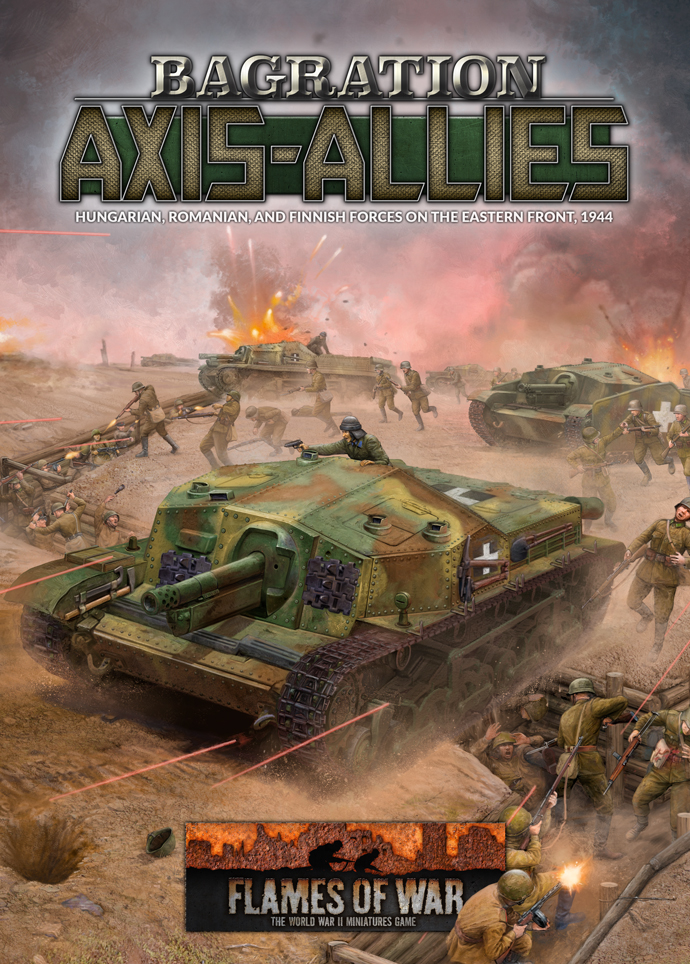 |
Hungarian 1st Cavalry Division facing the Soviet Operation Bagration Breakthrough
In April 1944 the Hungarian 1st Cavalry Division was mobilised after pressure from the Germans. Admiral Horthy, Hungarian Regent and head of state, had wanted to keep this elite division for the defence of Hungary. The division was mobilised and put through intensive training during April and May and finally moved to the border between 10 and 18 June 1944.
Unlike previous Hungarian mobile units the 1st Cavalry Division’s armoured battalion was entirely equipped with Hungarian manufactured tanks. They left Hungary with 84 tanks (62 Turán I and 22 Turán II), 23 Csaba armoured cars and 7 Nimrod anti-aircraft tanks.
It was to be deployed on the left wing of the Hungarian First Army with promises from the Germans that it would not be used away from the rest of the Hungarian forces. However, the Germans reneged on their promise and the division was almost immediately moved to the Pripyat Marshes.
|
|
Though it was assigned on paper to the Hungarian II Reserve Corps, a rear area security unit, in actuality it was attached to the German I Kavaleriekorps. Initially it took part in anti-partisan operations along the rail-lines in the area, but on 26 June the success of Soviet Operation Bagration saw them moved to the front.
The Soviets had burst through the front line of Army Group Centre and the Germans were assembling all available reserve units to plug the massive gap the Red Army had smashed through their lines. The Hungarian cavalry marched 150km east. By 30 June Slutsk had fallen and the division was diverted north though wooded terrain. On 3 July they arrived in the combat zone to face four different Soviet tank units. They were immediately thrown into action, despite promises by the Germans to Horthy that the cavalry wouldn’t be used against Soviet tanks. During the rush to the front the division’s second in command, Major-General István Makay, was killed when his truck hit a mine, making him the highest ranking Hungarian officer killed in action during the war.
The 1st Cavalry Division found itself filling gaps in the German line, but despite the overwhelming odds they preformed well, doing their part to stabilise the front.
|
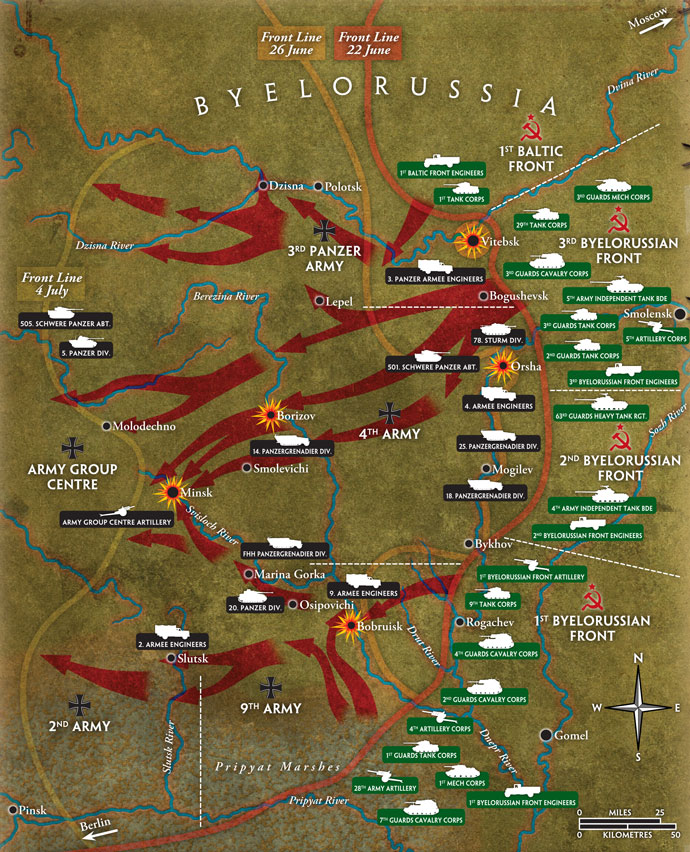 |
| On 2 July the Cavalry Tank Battalion was split into two battlegroups with accompanying cavalry and support units. Group Schell (under Colonel Zoltán Schell) contained a Heavy Tank Company, one and a half Huszár Regiments, two and half artillery battalions, one anti-aircraft battery, an armoured car platoon, and a German tank-hunter company. Group Schell replaced the German 4. Panzerdivision units at Timkovicki bridgehead. The remainder of the 1st Cavalry Tank Battalion and the Reconnaissance Battalion were placed in reserve at Kletsk. Group Schell launched a counterattack from Timkovicki on 3 July, but ran into a Soviet armoured attack. The Heavy Tank Company, Turán II tanks under Captain Attila Reök, saved the day, managing to halt the Soviet armour without casualties. |
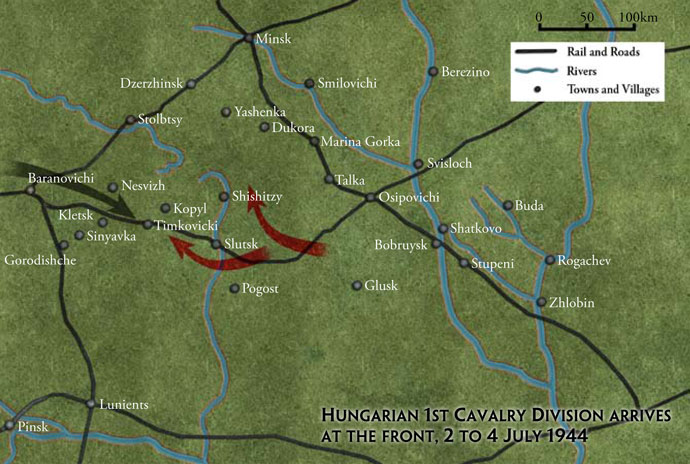 |
| Further heavy fighting eventually lead to the division being encircled at Kletsk. On 4 July they broke out of the encirclement with the Heavy Tank Company once more leading the way with support from Panzerfaust armed pioneers. They headed towards to the Shchara River. A number of Soviet tanks were knocked out, but two Turán II tanks were lost and Captain Attila Reök was wounded, losing his arm while directing the breakout from his turret. Despite this, the breakout was a success and the division escaped beyond the Shchara River. |
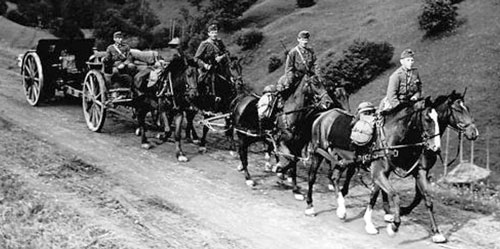 |
On 6 July they were occupying defensive positions on the Mishanka. The following day they were forced to withdraw after both their flanks were threatened by rapidly advancing Soviet forces. After two weeks of heavy fighting most of the cavalry, having lost their horses, was dismounted and continued to fight on foot as infantry. |
|
They were once more forced to withdraw on 11 July from Ivacevici. They moved back to Biarosa-Kartuska and on to Syalyets where they delayed a Soviet force for some time. At this point they were also ordered to hold the Yaseilda Valley.
On 13 July the Soviets attacked the line held by the 3rd Huszár Regiment and the German 102. Infanterie-Regiment. The Hungarian 15th Bicycle Battalion immediately launched a counterattack from Bakuny in the direction of Malech. The cyclists defeated the Soviets in hand-to-hand fighting, throwing back the attack.
|
|
By 15 July the armoured strength of the division was all but exhausted, with only six Csaba armoured cars still in action. Two infantry companies were organised from the remaining tank crews. In the meantime, despite German orders to hold to the last man, the Hungarians continued a fighting withdrawal between 15 July and 2 August. They were constantly harried by Soviet forces, plagued by supply and ammunition shortages and casualties were mounting. Finally the Germans relieved the division and sent it northwest of Warsaw to refit and rest.
To replace some of its tank losses a company of Hetzer assault guns with German crews was attached to the division.
|
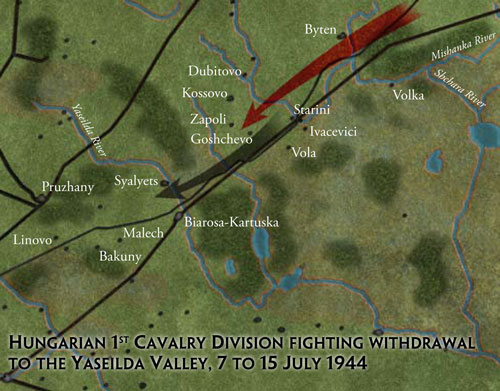 |
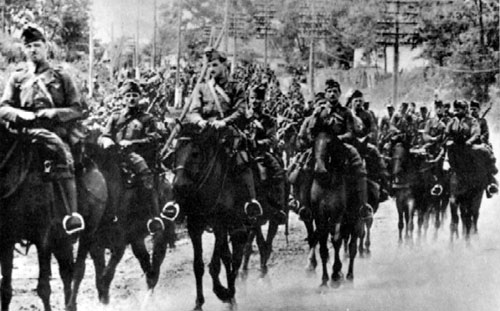 |
The Germans attempted to send the Hungarian Cavalry into Warsaw to help suppress the uprising. However, the division’s new commander General Mihaly vitéz Ibranyi refused to commit his unit sighting the long standing friendship between the Polish and Hungarian peoples.
During its refit the 1st Cavalry Division was renamed by Admiral Horthy the ‘Huszár Division’ for it excellent combat performance during the recent fighting. On 20 August it was assigned to the IV SS-Panzerkorps to defend Warsaw against the Soviets.
|
|
They were involved in heavy fighting around Warsaw until 23 September when they left Poland to return to Hungary.
During their time with the Germans the Huszár Division was continually mentioned in German despatches for their excellent combat performance. They even gained praise from Guderian himself.
After returning to Hungary they received the 1st Huszár Replacement Regiment as reinforcements, but no more armour.
|
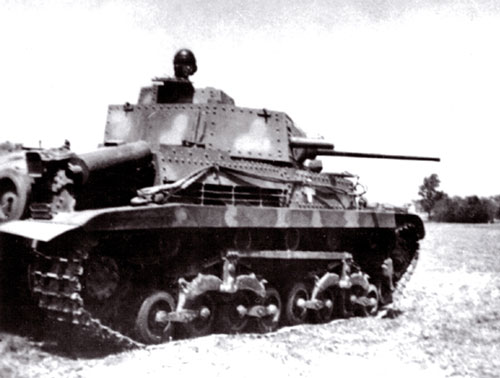 |
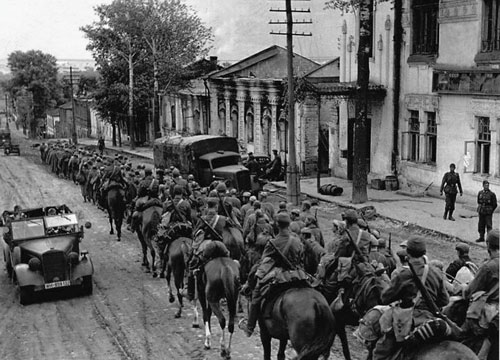 |
During October to November 1944 they fought alongside three Huszár Regiments (2nd, 3rd and 4th), five artillery battalions (1st, 7th, 73rd, 82nd and IV Motorised), the 15th Bicycle Battalion, 3rd Reconnaissance Battalion, 55th Anti-aircraft Artillery Battalion, II Engineer Battalion, 1st Signals Battalion and a heavy anti-tank company. The 2nd Huszár Regiment fought at Szentes, covering withdrawing Hungarian troops from 7 October. Their heavy anti-tank company destroyed several Soviet tanks during the fighting. |
| During the Soviet invasion the situation was very fluid and the Huszárs were split up and committed as needed along the front. During November the Huszár Division was south of Budapest defending Csepel Island. After the fall of Budapest the division withdrew west and ended the war in Austria where they surrendered to the US Army in March 1945. |
|
In Flames Of War
To field the Huszárs of the Hungarian 1st Cavalry Division during the Bagration fighting use the 1st Cavalry Division Huszar Squadron and 75mm Huszar Battery Command Cards from the Hungarian Bagration: Axis Allies Command Card Pack in conjuction with the Bagration: Axis Allies book.
|
Last Updated On Thursday, June 3, 2021 by Wayne at Battlefront
|
|
|